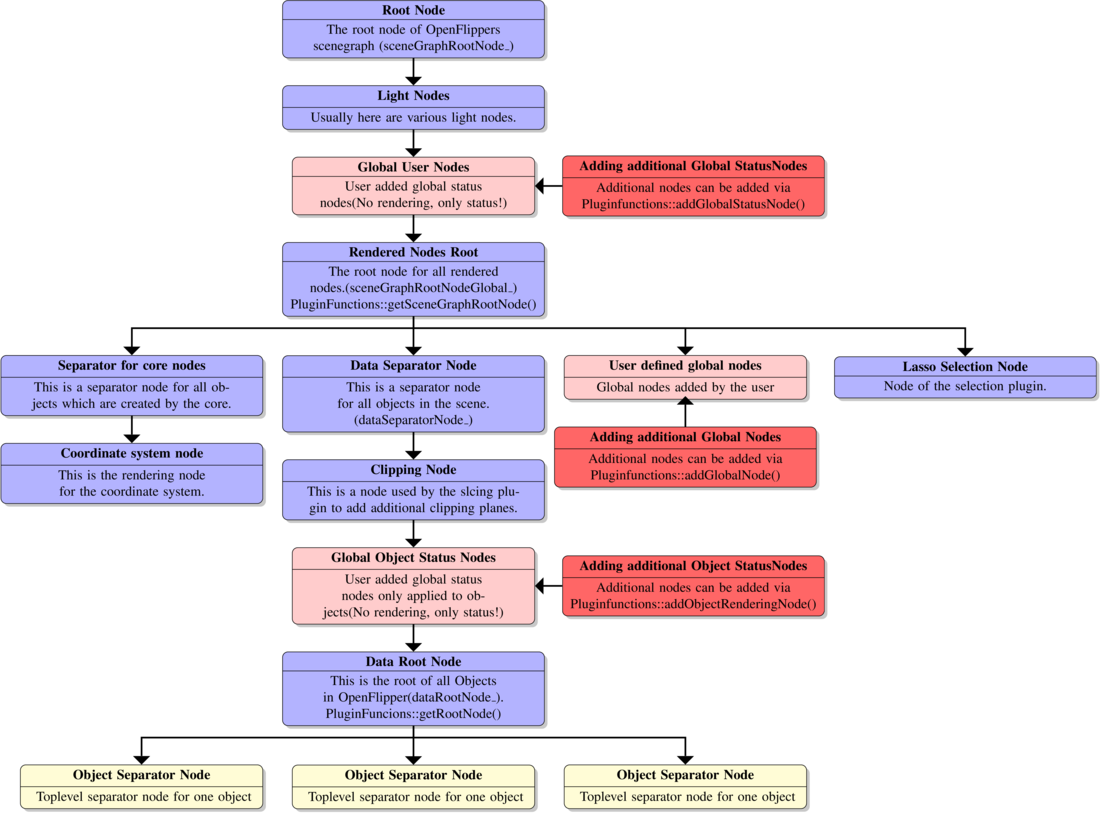Overview
OpenFlipper has an integrated scenegraph which is used to render the scene. There are various nodes available, which are used to transform the scene, set OpenGL status flags, render objects or react on user interaction. When OpenFlipper is started, it generates a predefined scenegraph structure, that can be extended by the programmer. The following figure shows the basic setup:

Adding additional scenegraph nodes
Most of the time, you do not have to deal with scenegraph nodes directly. The Objects (e.g. MeshObject,PlaneObject) automatically handle and update their nodes as required. Each of the objects has a top level SeparatorNode which is attached to the data root node(PluginFunctions::getRootNode()). Below the SeparatorNode the objects generate their own node structure. This structure consists of the structure of BaseObjectData (which is the base class for all visible objects The BaseObjectData class). Visibility of each object is than managed in the DataControl plugin by hiding the subtree below the objects SeparatorNode.
Adding global status nodes
It is also possible to add several status nodes to the scenegraph. The top level status nodes (typically the light sources) are added via PluginFunctions::addGlobalStatusNode(). The light sources are managed by the light plugin and should not be modified directly. Please keep in mind, that all objects below your node will be influenced. This includes also core nodes like the coordinate system.
- Note
- Do not add nodes here, which render objects (triangles,...)
Adding data status nodes
There is a second possibility to add special status nodes which will be only applied to data objects. These are added via PluginFunctions::addObjectRenderingNode().
- Note
- You should also avoid nodes that render primitives here.
Adding global rendering nodes
If you need global nodes that do not correspond to objects, you can add them as global nodes (PluginFunctions::addGlobalNode(). These nodes should be completely independent of any other objects in the scene. If you have nodes, that visualize properties of an object or have a different association with it, please read (Adding nodes to objects)
Adding nodes to objects
All nodes that refer to a specific object have to be attached to it. This way, the core can hide them, when the object gets hidden and if it gets deleted, the attached nodes will also be cleaned up. The functions for attaching nodes are specified in BaseObjectData (Functions to attach additional Nodes to objects).